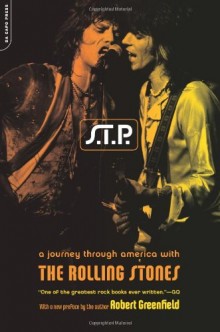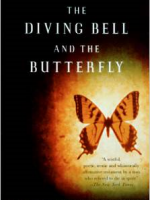 S.T.P.
S.T.P.
Biography, Music
Da Capo Press
2002
337

These days the Rolling Stones are an anachronism. The aged and raddled face of Mick Jagger no longer inspires hysteria and his dalliances with young ones less than half his age are nothing more than the desperate attempts of an aging Lothario to reclaim his lost youth. Despite their antiquated façade, the Stones refuse to lay down and die – but there was a time when their raw sinewy rock was as dangerous and thrilling as music could be.
As the Stones gear up for their 40th anniversary tour of the US in 2002, ‘A Journey Through America with the Rolling Stones’ takes you way, way back to a different time in rock ‘n’ roll. A journalist on their 1972 American tour, Greenfield offers a well-rounded first-hand report of that turbulent period.
‘Exile On Main Street’ was in the shops and the Stones were determined to tour it across the US. But this was their first tour in the wake of the death and devastation at their free concert at Altamont in 1969. There were constant fears that Jagger was to be assassinated and a growing paranoia creeping throughout the counterculture. Soldiers were still being shipped out to Vietnam, hard drugs were making inroads into the scene and civil rights agitation had become a life or death occupation. There were riots across the country and kids were being beaten unconscious by policemen.
The Stones’ tour was set against this volatile background and author Robert Greenfield accurately captures the tension between it and the indolence of A-list hangers-on including Truman Capote and Princess Lee Radziwill. But they were not the only bees to swarm around the Stones honey pot. The band swept through American cities, grabbing at kids on the way – a night of tour madness could be anyone’s for a handful of Mandrax or a couple of joints.
Greenfield portrays the moment when rock became commercialised, when rock ‘n’ roll lay down with the men in grey suits and never quite made it up again. A gifted observer, he is not blinded by the glare from the Glimmer Twins – he also writes of the quieter members of the Stones, the people behind the scenes that made the whole thing work, the fans and the freaks.
The book is packed with anecdotes and characters aplenty – the non-event of a trip to Hugh Heffner’s Playboy mansion; the Pisces Apple Lady; a groupie’s account of what it was like to be on board the tour plane with an orgy going on at one end and Bill Wyman trying to distract his young son at the other; the Stone’s comical arrest in Massachusetts en route to a gig in Boston; tour manager Chip Monck’s plan to release 500 live chickens into the crowd during Street Fighting Man at the final show in Madison Square Garden.
Although the tour was almost 30 years ago, Greenfield’s vivid descriptions drag you into the mayhem and debauchery that was the Rolling Stones in their heyday. The resulting read is a gleeful blast from start to finish. ![]()




